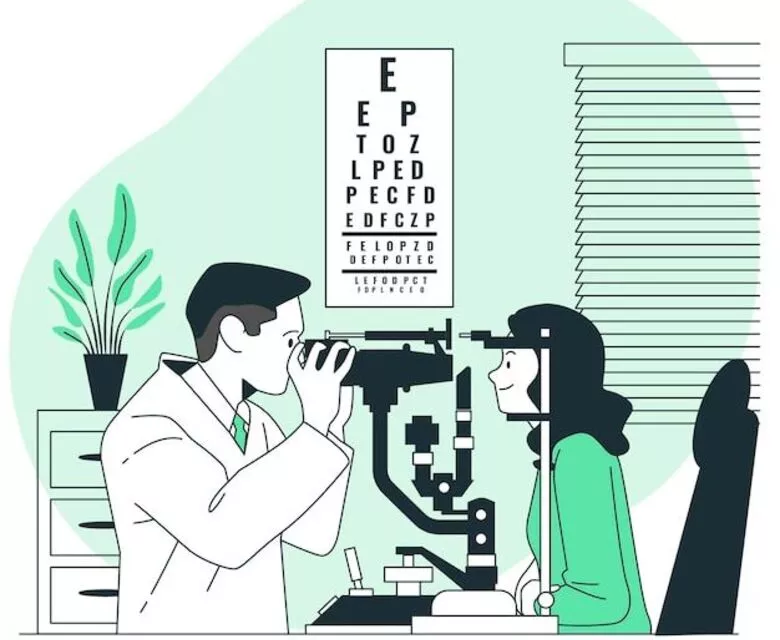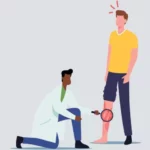What Is a Cataract?
Contents
A cataract is an eye disorder, where the black portion of your eye is covered with a white cloud that leads to a decrease in vision.
A person with cataracts can’t focus light in the same way, which leads to blurry vision. Vision also changes according to location and size.
It is common in aged people, according to gov data of India, is estimated that 62.6% of all blindness people are a result of cataracts.
However, it may also occur due to injury, trauma, radiation exposure, present at birth, and many environmental factors.
Cataract often starts slowly where blurry vision is its first sign, and that can affect one or both of your eyes.
Cataracts can restrict the daily routine of patients, such as reading, and writing, and generally reduce the quality of life (1) (2).

Types of Cataract
There are 5 major reasons for cataracts, also no matter what type of cataract you have, treatment is needed.
Age-related cataract
It basically develops with age, and the most common type of cataract, more than 50% of people age 80 and older have had cataracts.
Age-related are more likely to develop (3) of:
- Smoke
- history of cataract
- diabetes
- taking medication for a long time
- had eye surgeries
Age-related cataracts may develop between 40 and 50 years old.
Traumatic cataract
It may occur due to blunt or penetrating trauma that breaks the lens fibers which occurs due to an injury or accident on the eye.
This type of cataract could form quickly after the injury or could be for many years later (3)
Pediatric cataract
Children get cataracts too, but it is rare, and this pediatric is the leading cause of childhood blindness (4).
This type of cataract is caused by genetics or run by families. This also happens due to other potential reasons including:
- During pregnancy any illnesses like tumors or uveitis in the eye
- eye injuries
- radiation
- medication use
They need immediate treatment at an early age, so children don’t get other vision problems, like lazy eye, etc (5)
Radiation cataract
It happens due to certain types of radiation, including UV rays from the sun and cancer radiation treatment (6)
Signs and symptoms occurring depend on high exposure and lower exposure which can be seen in a year or even seen many years.
Secondary cataract
It means after catarct surgery, some people may develop a condition called a secondary cataract, which causes blurry vision again (7)
There are several risk factors that develop secondary cataracts (8) including:
- Age
- IOL (lack of posterior chamber intraocular lens)
- type of surgical technique
- lens material or design
- large IOL optic diameter
This condition also called Posterior capsule opacification, is a common, but easy fix through laser treatment.
Signs and Symptoms
There are several signs and symptoms of cataracts which include:
- Cloudy, blurry, and dim vision is the first sign of cataract
- seen two images of a single object
- difficulty seeing at night
- sensitive to lights such as sunlight, direct headlamp, etc
- rings around every light
- glare
- severe cataract, the clouding of the lens may turn yellow or brownish
- See different colors
Reasons And Risk
One of the most common reasons for cataracts is older age, which is natural, where aging or injury changes the eye tissue.
The eye is made up of mostly water and proteins, as proteins break down over time, which hang around in your eye and cause cloudy and blurry vision.
There are some other potential reasons that boost the formation of cataracts and these people are more at risk of it are also include:
- Smokers whether it is environment or tobacco
- genetics
- long-time cooking on a wood fire
- past eye surgery
- people who suffer from these diseases or illnesses are:
- diabetes
- underactive thyroid
- a genetic disorder like – down, patau, and Edwards syndrome
- eye Infections
- high blood pressure
- skin disease conditions people like – atopic dermatitis and eczema
- obesity
- Too much exposure to sunlight with the naked eye
- trauma
- medication use of long-time
- radiation therapy (9)
- People who consume excessive alcohol
- Low vitamin C intake and serum level are allied with greater cataract risk (10)
Cataracts usually don’t lead to pain or hurt, but they can cause discomfort by making eye vision blurry and sensitive to light.
How Doctor Diagnoses It?
Your healthcare performs Eye chart tests to measure your eye pressure, through different vision distances and tonometry.
Checking the optic nerve and retina of your eye to find injury.
Doctors simply diagnose cataracts by an eye examination which includes:
Visual acuity test – The visual acuity test is used to determine how well a person can see small letters and the Snellen chart.
Tonometry test – It measures the internal pressure of the eye, also it is used for glaucoma diseases.
In this, a person looks into a machine called a tonometer, where a person experiences a brief pull of air into the eye.
Slit lamp test – After the tonometry test, the patient goes to a slip lamp examination, which detects the range of conditions.
In this, a specialist directs light onto the eye, which allows the specialist to highly magnify the view of the eye structure.
To check eye health, and detect any signs of an injury, infection, illness, or disease.
Refraction test – At the end of the test, refraction is performed to determine a person’s pageant power.
Eye drops are also necessary during the test, to dilate or dilate the pupils about 30 is required to show effect.
Other tests may include – checking the sensitivity of the eyes to light, and how hard are you to see in light and at night time.
Treatment of Cataract
The most common and effective treatment is surgery which is most common and effective around the world.

Surgery
There is no specific time to remove cataract, it can be performed at any level and no longer require ripening of the lens.
Phacoemulsification – It is the most widely used cataract surgery in the world.
In this, the eye’s internal lens is emulsified with an ultrasonic handpiece and aspirated from the eye.
- phacoemulsification + IOL (Foldable Lenses) cost in India is estimated to be ₹6,800 – ₹35,000
- phacoemulsification + IOL (foldable progressive lenses) is – ₹40,000 – ₹70,000
Approximately 9 out of 10 patients can achieve a corrected vision of 20/40 or better after surgery (10).
Extracapsular Cataract extraction – In this surgeon makes the incision and removes the front capsule of the lens and the cloudy lens.
After removing the older lens, a new artificial intraocular lens is placed in the same place (11)
In addition, Surgery time depends on how severe is the case, Usually, the surgery takes 30 to 45 minutes.
Recovery And Risk of Surgery
So after a couple of days, most of the discomfort disappears, and the eye healing occurs within several weeks.
If you see any discomfort, then consult your doctor.
Although surgery is quite safe and very successful there are some risks of cataract surgery including:
- Infection
- bleeding
- inflammation or swelling
- disclocation of artificial lens
- Glaucoma (a group of eye conditions that damage the optic nerve)
- retinal detachment, but through highly skilled specialists and modern science, this risk has also been reduced
Artificial Intelligence Bladeless Laser Cataract Surgery
This is a new latest operation for cataracts, it suggests that is way better than both ECCE, phaco, and phacoemulsification.
AIBLCS has many benefits which include
- In this through AI, an accurate or perfect result comes
- During the operation, no incisions or cuts are used
- The complication rate is almost no
- Safety has been increased
- Quality and recovery are very fast
- There is no pain at all during the operation through AI
- very less chance of infection
- No stitches, bleeding, bandages, or hospitalization
Even, specialists say that had the operation today, and from tomorrow you can see, just with 3-4 days’ precautions.
How can I prevent cataracts?
To reduce the chance of developing cataracts include:
- wearing wide sunglasses and a hat
- Avoid smoking, cooking on a wood fire
- leafy green vegetables
- consume vitamins A, C, and E (12)
- maintain healthy weight
- avoid excessive alcohol
- maintain your sugar level (13) (14)
Down Time
A cataract is a disorder of the eye, which mostly affects an older person, where the black portion of your eye is covered with a white cloud.
Treat it before it is harder to treat, and left untreated makes the situation worse, moreover, avoid triggering things again.




